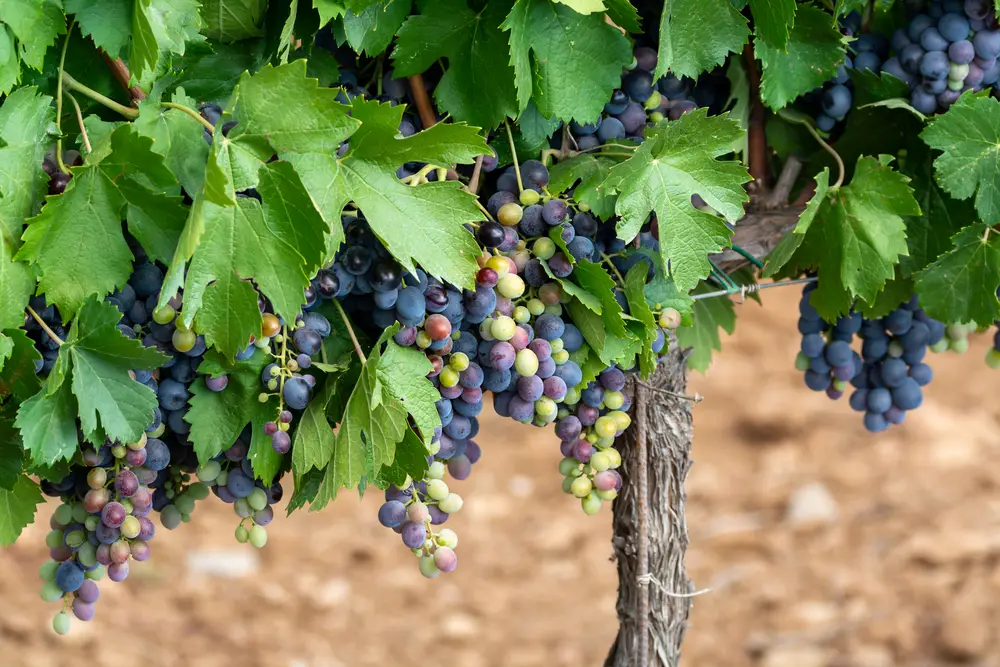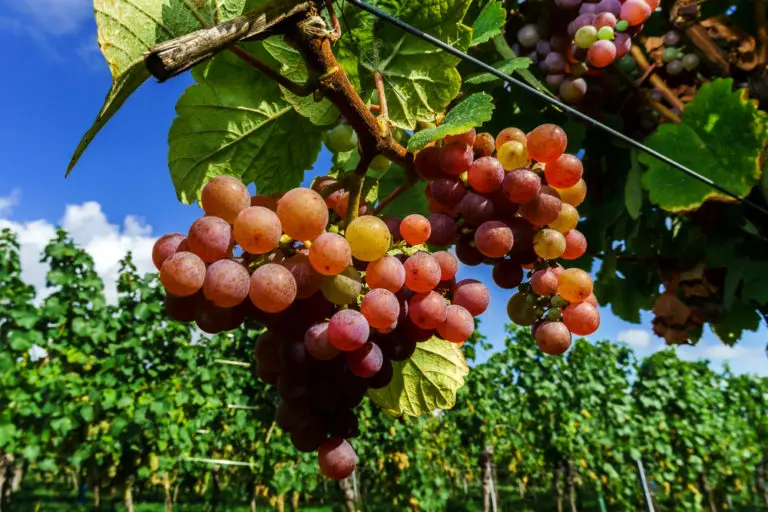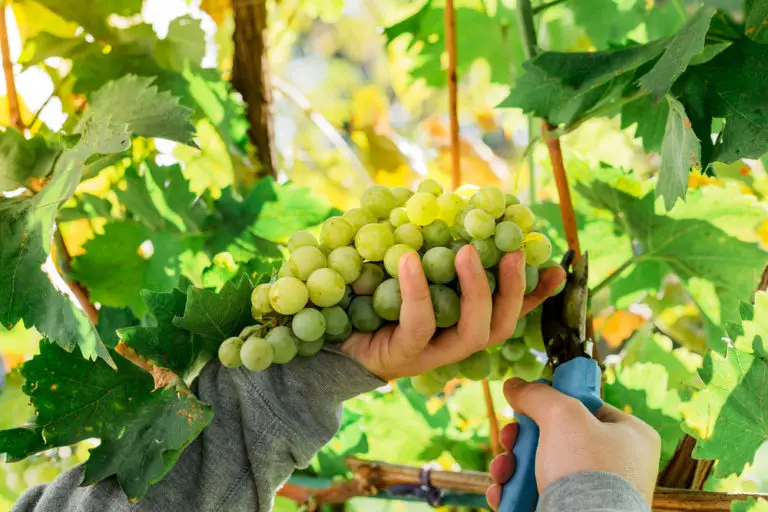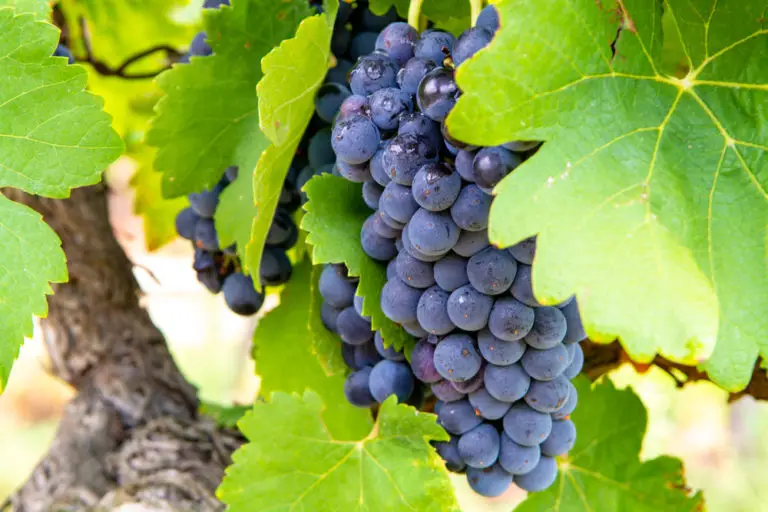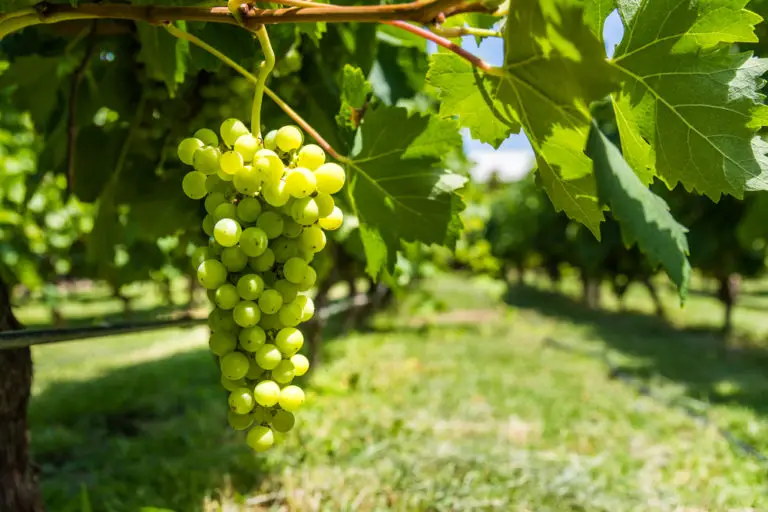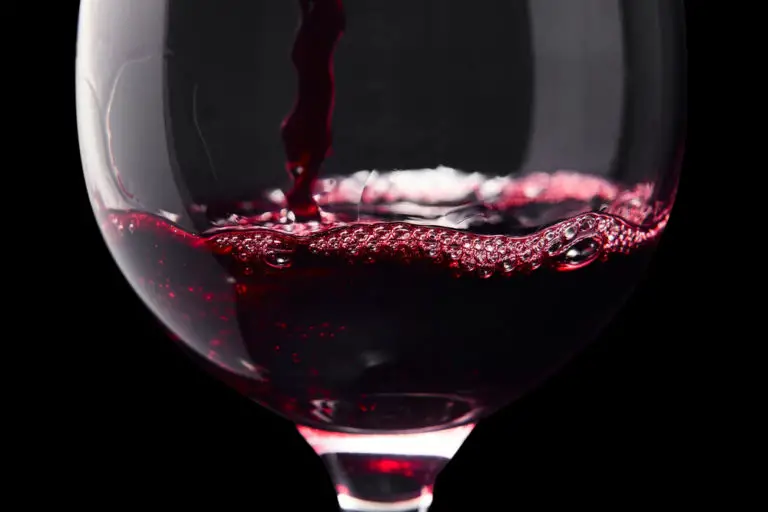Syrah: The Beginners Guide (2024)
The grape variety, which outside of Europe is usually referred to as Shiraz and is called Syrah in its country of origin, France, is one of the most important red grape varieties. It is the result of a cross between the two old French varieties Dureza and Mondeuse Blanche. It is offered as a single variety, but often also as a component in blended wines.
Wine Color: Dark Ruby Red
Characteristics: Full-bodied, Medium to high tannin, Medium Acidity
Color of berry skin: Black
Flavor: Semi-dry to dry
ABV: 15%
Origin: Northern Rhône, France
Notable Regions: France, Australia, and the United States
Most Expensive Bottle: Penfolds Bin 170 Kalimna Vineyard
Common synonyms: Shiraz, Sira, Sirac, Sirah, and Syrac
- What is Syrah?
- Known Regions for Syrah
- Popular Blends of Syrah
- How to Enjoy Syrah?
- How is Syrah Made?
- History of Syrah
- Alternatives for Syrah
What is Syrah?
From the vines of the Syrah or Shiraz grape variety, two styles are created, depending on the Syrah origin and the aging in the winery, which differ significantly in terms of smell and taste. Syrah’s pronunciation is sai·ruh.
Typical for both Shiraz and Syrah color are purple-red at a young age and dark brown-red with increasing maturity. In both styles of wine, you can recognize spicy-sweet and intense, berry aromas such as blackcurrant, raspberry, and blackberry.
Tannins are noticeable in Syrah/Shiraz wines, but mostly soft and round. Compared to tannin-rich red wines made from grape varieties such as Cabernet Sauvignon, Shiraz/Syrah wines are therefore smoother and usually ripe for consumption earlier. At the same time, most red wines made from this grape variety have good aging potential.
The individual winemaker is free to decide which grape variety name to use on the label, but mostly he deliberately chooses the name as an indication of the style of his red wine. So you have a tip for differentiation when buying a Syrah/Shiraz name.
Syrah vs. Merlot vs. Pinot Noir
Syrah and Merlot have many similar characteristics and some differences and complexities that make them different from each other.
The grapes of Merlot are fleshy and soft, and it rips early making it a popular blending partner for varieties like Cabernet Sauvignon, while Syrah’s name is mainly used as a blending partner with other varieties when it ripens late. Merlot is medium-bodied, flavourful, and delicate, while on the other hand, Syrah’s profile is bold, full-bodied and a powerful wine having more tannins.
There are several differences between Pinot Noir and Syrah. Syrah has a dark jam-like flavor while Pinot Noir has bright berry notes (strawberries, raspberries). Pinot Noir is best drunk young, while Shiraz is at its best when allowed to age. Also, Shiraz’s taste is known for its lush, full-body having smoky and peppery accents, while Pinot Noir exhibits a light body and has herbaceous accents.
Syrah Characteristics
Shiraz is considered to be one of the noblest grape varieties, from which sometimes majestic red wine can be produced. Wine lovers can store them in their cellars for a long time, as a Shiraz or Syrah meaning has great development potential and matures over decades.
Syrah characteristics do not place high demands on the soil and are quite insensitive to frost, but the ripening behavior of the grapes is problematic. Since the transition from fully ripe to overripe takes place very quickly, Syrah vines need as much sunshine as possible during the entire development period, but this must not be too strong during the ripening period.
The grapes are blue-black, have soft flesh, and have a pleasant smell of raspberries and violets. Syrah wines are rich in tannins and aged wines of excellent quality. A strong aroma of currants, raspberries, or blackberries is characteristic of these Italian wines.
Syrah Taste Profile
Typical Syrah wines are dark red and have a strong acidity. Syrah tastes like different berries and can take on aromas of pepper and truffle, especially when they are matured in barriques. The fine fruity notes also characterize Shiraz wines, which are generally fuller and more alcoholic.
The aim of every Syrah winemaker is for the small, dark berries to develop the full aroma potpourri of vibrant fruit and spice: blackcurrant, plum, and blackberry, excitingly underlaid with herbaceous and peppery tones. The cause of the clear pepper notes is the chemical rotundone. This is not only contained in the Syrah grapes but also white and black pepper.
In addition, there are special, almost meaty aromas in the aged Syrah wine, which remind you of smoked bacon.
Because Syrah even has a little more body than Cabernet Sauvignon, which is the basis for many of the wines there. And so the Syrah grapes provided a welcome boost in color and volume when the wines in Bordeaux were too weak.
Syrah Ageability
Every wine is different. Therefore, life expectancy is also very different. In general, however, one can say that wines have a longer shelf life, the higher the alcohol, sweetness, acidity, and – in red wine – tannin content. It depends on the sum of these ingredients.
This means that noble sweet specialties, which also have fresh acidity and are not too low in alcohol content, can be stored unseen for 20 years or even longer. They often only develop their full maturity and elegance after a few years and are extraordinary gifts for very special occasions, such as weddings.
High-quality red wines with a high proportion of tannins and alcohol contents of 13% by volume or more can also be kept for decades, especially if they have also matured in barrique barrels. Basic qualities of dry wines should be drunk within 3 years. In the premium segment, even 5-10 years are no problem with dry wines.
Notable Regions for Syrah
The Shiraz grape thrives best in sunny and rather dry areas. Since the grape variety adapts quickly to the local climate and is relatively robust and pest-resistant, it is popularly grown in many countries around the world. The major wine-producing Syrah regions are France, Australia, and the United States.
France
Côtes du Rhône: Cornas, Hermitage, St. Joseph, Côte-Rôtie
The spiritual home of Syrah in France. A wide range of varietal and blended Syrah wines are produced in this region. In Southern Rhone, it is added to Grenache wine to add structure to it. This region, unlike the Southern Rhone winemakers, does not produce many high-quality Syrah varietals.
Australia
Barossa Valley, McLaren Vale, Limestone Coast
In 1832, James Busby, an immigrant from Europe planted Syrah for the first time in Australia. It became famous widely by the name of Shiraz and soon became one of the region’s most loved red wine grapes. It is produced in the regions of Barossa Valley, Margaret River, McLaren Vale, and Adelaide Hills.
United States
Paso Robles, Santa Barbara, Napa, Sonoma, Columbia Valley (WA)
Syrah is famous for its French name in this region. Producers prefer using Shiraz on their wine labels if the wine is produced using the new-world Syrah winemaking techniques. It was first planted in California by Rhone Rangers in the 1970s. Currently, it is also grown in regions of Oregon, Ohio, and Washington State.
Other Syrah Wine Regions
Syrah or Shiraz are also grown in many other new worlds as well as old-world regions. Italy, Spain, New Zealand, South Africa, Argentina, Portugal, and Chile are some other regions that are known for producing it. At some places, they are used to produce varietals, while others are known for producing Syrah blends.
Popular Blends of Syrah
Syrah or Shiraz contributes to many fine and famous blends of the world. It is best enjoyed as a single varietal and as a blend. Here are some of the popular Syrah blends that you must try if you want to try some fine blends.
Clos de Mûres Rouge Languedoc DOP 2019 – Château Paul Mas
Crafted from 85% Syrah alcohol percentage and the rest Grenache Noir and Mourvèdre, this blend is aged in barrels and offers itself in a glass of dense crimson. This Domaine Paul Mas red wine presents all kinds of blueberries, plums, mulberries, black cherries, and morello cherries to the nose. Further Syrah flavors such as black tea, gingerbread spices, and cinnamon are added by the expansion in the large wooden barrel.
Delas Domaine des Tourettes Hermitage
The Delas Frères Domaine des Tourettes Hermitage presents itself to the wine lover wonderfully dry. This red wine is never coarse or sparse, but round and supple. This meaty and silky red wine is balanced and complex on the palate. The finale of mature Syrah from the Rhône Valley wine-growing region has a beautiful finish.
E. Guigal Château d’Ampuis Côte-Rôtie
Built along the lines of 2015, the 2018 Cote Rotie Chateau d’Ampuis is full-bodied, rich, ripe, and concentrated. he fascinatingly complex bouquet emits a delicious scent fanfare with aromas of cassis, plums, and black cherries, bourbon vanilla, licorice, and cedarwood as well as roasted spices and dried flowers. It is a blend of Syrah, Viognier.
J. Lohr “South Ridge” Syrah Paso Robles
J. Lohr Winery’s J. Lohr Winery Paso Robles South Ridge Syrah 2017 is a red wine with roots in the Paso Robles wine region and made with Syrah from the 2017 harvest. This red wine has 14% vol. It is a bold wine with moderate tannins, best enjoyed with beef, lamb, or poultry.
Le Macchiole “Scrio” Toscana
The Le Macchiole Scrio Syrah Rosso Tuscany IGT from the Syrah, Shiraz vines from the Tuscany region is a red wine that tastes full-bodied and complex. It has very persistent balsamic notes. It is round in the tasting, gently adding acidity with sweet tannins along with notes of mint and eucalyptus.
How to Enjoy Syrah?
The Syrah flavor profile cannot be compared with any other grape variety. Therefore, it makes an interesting drink for Friday evening. The right knowledge of the wine will make sure that you enjoy Syrah at its best. Here are some tips to drink Syrah.
Food Pairings
Syrah/Shiraz red wine, with its sweet-spicy nature and medium to high alcohol content, tastes great with strongly spiced dishes. So please DO NOT plan a tender chicken breast if you want to buy massive Shiraz wine. The dishes should then be a bit more substantial.
Fruity and spicy Syrah red wine go well with pasta with meat or fruity tomato sauce, with meat pie, with risotto with mushrooms and herbs. If the food is salty, however, the Syrah wine should be low in tannin.
Medium to heavy (high Syrah alcohol) wine tastes great with roasts made from beef, lamb, and pork. Full varietal Shiraz red wines or powerful Shiraz cuvées also go well with heavily spiced Asian or Indian dishes such as curry.
We recommend massive Syrah wine pairing with braised beef with a juicy, aromatic sauce, with tasty game such as hare, roe deer, or grouse, or with strong sausages.
It can even work for “dessert”. If you use the sugar sparingly during preparation, chocolate pudding goes well with full, ripe Shiraz wine. Alternatively, dark chocolate with at least 60% cocoa also works.
Temperature
One of the reasons why many people do not enjoy wine is that it is not served at the correct temperature. Temperature can greatly alter the taste of wine. It is one of the most important factors when serving wine and being able to enjoy it. For this reason, it is vitally important to serve the wine at the right temperature given its enormous importance for optimal consumption.
If the serving temperature is very low, the wine loses many aromas because the volatile components are not released. A very cold wine will be a wine with little flavor. If the ambient temperature is very high (20ºC, or more), the acidity and alcohol are accentuated, which spoils the taste of the wine, both on the nose and in the mouth.
The serving temperature of a Shiraz wine is between 16ºC and 19ºC for a young wine, which allows the wine to expose itself, highlighting its aromas and flavors. For an aging wine it is recommended to serve between 18ºC-20ºC, likewise, it is recommended to decant at least one hour before drinking Syrah.
Stemware
In wine, there are common places that are sometimes difficult to save. For the red wine, a large and wide glass; smaller for whites and elongated for sparkling wines. But there are more nuances in choosing the right glass.
When you go deeper into the world of wine, you see how glassware can increase by leaps and bounds. It is surprising to know that serving the same wine in two different glasses can change its characteristic aroma, known as a bouquet, for this reason, there are different types of glasses to taste specific wines and favor their particularities. The main types of red wine glasses are:
Copa Burdeos
It is taller and its bowl is not as large, it is designed for wines with more body like Cabernet Sauvignon or Merlot because its size allows it to go directly to the back of the mouth and maximize its flavor.
Burgundy cup
Its balloon shape facilitates the movement of the wine within it, this also benefits the release of the aroma; Its manufacture is very peculiar since it is a single piece of lead crystal in a flared shape, which allows the wine to breathe.
Copa pinot noir
It is large, it was designed to bring the wine directly to the palate, its shape seeks to enhance the sweetness or acidity of the wine. This makes it a perfect glass of Syrah.
Cabernet Sauvignon Cup
It is easy to handle, which allows you to enjoy the aroma and flavor of the wine since it softens the rough edges.
How is Syrah Made?
Shiraz red wines are made with the Syrah strain and have the peculiarity that they can be drunk young, at which time it presents fresh notes and very pleasant aromas. Its aging process is very fast but with high quality and resisting oxidation, this allows it to be drunk quite soon or with a long aging time. It evolves favorably over time and becomes a full-bodied exponent.
1. Harvesting
This first step refers to the collection of the bunches of grapes from Syrah vineyard when they reach the desired level of maturity. For this, there is no single rule, as it will depend on the sugar present in the fruit, which in turn determines the intensity of the fermentation and the amount of alcohol that the drink will have.
2. Destemming
It is usually the first process done in the winery and consists of removing the branches and leaves from the bunch, leaving only the loose grapes.
The grapes are then passed through a machine that is responsible for breaking the skin, and together with the pulp, obtain a pasty mixture called must. Here you have to take special care to avoid crushing the seeds, as they cause a bitter taste.
3. Maceration
During the maceration, the alcoholic fermentation takes place, by which the sugar in the fruit is converted into alcohol thanks to the presence of yeast in the grape. During this time, care must be taken that the temperature does not exceed 30 C to prevent the process from being too aggressive.
4. Ageing
It is one of the most representative stages in the production of red wine since in it the drink is left to rest in wooden barrels that have been previously toasted. The type of wood, the level of toast it has, and the aging time will continue to modify the notes until the final result is found.
During aging, there is a process called racking, which consists of transferring the wine from one barrel to another to air it and eliminate residues. Clarification is also carried out, a kind of “cleaning” that carries away the last unwanted particles that may remain at this point and cloud the drink.
5. Bottling
It is the final step and in it, the wine is introduced into the bottles in which it will be released on the market. With young wines, marketing is done immediately, but the rest will still have a period of rest called aging. Here the oxygen that penetrates through the cork will continue to subtly modify its properties until it is consumed.
History of Syrah
For many winemakers, working with this grape variety was too demanding for many years, and the area under vines has been steadily declining, especially in Europe. In the last 30 years, however, the demand for high-class Shiraz/Syrah wines has exploded and the area under vines has increased fivefold.
The Syrah grape variety is a natural cross between the old Mondeuse Blanche (white) x Dureza (red) varieties and probably originated in the Rhône Valley. In addition to other large grape varieties, Syrah is known worldwide as “Cépages nobles”, a noble grape variety.
Different spellings and myths repeatedly led to great confusion about the origin of the Syrah grape and other varieties. Only in 2000 did DNA analysis provide clarity and Syrah’s history was known.
The spelling Shiraz got the grape variety from the Australian James Busby, who brought it overseas in 1833. The oldest, almost 200-year-old vines are still in the Barossa Valley today. Australian Shiraz has shaped a new, unique style worldwide.
Max Schubert gained historical recognition in the 1950s as a winemaker at the Penfolds winery with his famous “Grange”. Many wine lovers today consider Shiraz wine to be a synonym for good wines from overseas.
Alternatives for Syrah
When you drink the same wine for a long duration, selecting a new favorite can become difficult. Luckily, there are some alternate options that you can try as an alternative to Syrah. Many people agree to the fact that they enjoy these similar wines even more than Syrah after they try them.
Pinotage
Pinotage is a cross between the Pinot Noir and Cinsault grapes. The variety inherits the sweet and berry flavor of Pinot Noir, while at the same time tasting as fruity as Cinsaut. The grape variety is used to produce thick wines that are rich in sugar and thus obtain the necessary sweetness.
Cabernet Sauvignon
Cabernet Sauvignon as a natural cross of Cabernet Franc x Sauvignon Blanc is one of the very late-ripening grape varieties, which is characterized by the fact that taste and bouquet always remain unmistakable regardless of location and climate. The grapes give the wine a deep dark color and are ideally suited for barrique aging and long-term storage.
Malbec
Malbec is an old French grape variety that is mainly grown in South America today and produces wonderfully strong, full-bodied grapes with velvety blackberry aromas. The dry Malbec wines are extremely strong in color, more black than purple, and have a strong, spicy taste that typically has aromas of plums, tobacco, blueberries, chocolate, juniper, or bay leaves.
FAQ
What is syrah wine?
Shiraz is a rich, jam-like, semi-sweet red wine with sweet aromas of red berries and subtle hints of vanilla and spices.
What does Syrah wine taste like?
They have subtle wood notes and typical aromas such as cloves, cinnamon, pepper, forest floor, or leather. The Syrah alcohol content is rather moderate.
What does Syrah pair with?
Syrah with its sweet-spicy nature and medium to high alcohol content taste great with strongly spiced dishes. You can try types of Syrah with Braised Beef, Duck, Grilled meats, and vegetables.
What is the difference between Syrah and Petite Syrah?
Syrah comes from France’s Rhone Valley, whereas Petite Sirah grapes are a French import. Also, Syrah Petite is bolder and boasts a rich full flavor and powerfully dense tannins.
What is the difference between Shiraz and Syrah?
Technically these two wines are made from the same grapes, but their Country of origin makes them different. Syrah is from France, and Shiraz is from Australia.
Is Syrah dry or sweet wine?
Syrah is a dry, opaque, full-bodied wine, with moderate-to-high Syrah abv (13–14.5%), brisk acidity, and firm tannins.
Why is Syrah so expensive?
Because the farming of this variety is done in steep, sun-baked, rocky vineyards it is backbreaking work, and yields are small.

